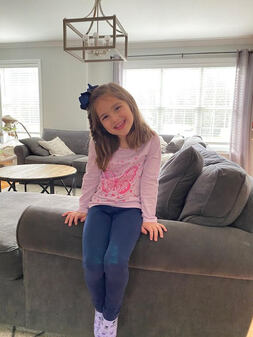 Name: Caroline T. Age: 5 How long have you been dancing with SRL? Why SRL? I started in Fall 2019 as a pre-beginner. Now this is my second year and I'm in the beginner class. My sister and I both started at SRL at the same time. If you were an animal, which one would you be and why? I would be a dolphin because they are cute and I could swim with all the other animals in the ocean. What do you want to be when you grow up? Why? A veterinarian because you get to take care of animals. How did you get started with Irish dance? I tried it in the summer at a camp, and really liked it.  Who do you look up to? Daddy What's the best gift you ever received? My ice cream play-doh set I got for Christmas. What's your favorite snack and favorite TV show to watch while you eat it? Pretzels, and Peppa Pig What's your favorite dance-related memory? Wearing my Halloween costume in class! This post is part of a series. See our Q&A with Caroline's big sister, Madison T., here. Check out the blog every Monday and Thursday for more posts about Irish history, dance culture, community news, and spotlights on our dancers, staff, and families—among other fun projects! And don’t forget to dance along with us on both Facebook and Instagram.
0 Comments
Check out Volume I and Volume II! 1. Hook Lighthouse in County Wexford is one of the oldest in the world. While the present structure has been around for 848 years, there’s evidence that a lighthouse has stood on that spot back to the 5th century. 2. St. Patrick is also the patron saint of Nigeria. He was named the patron saint of the country by Irish bishops in 1961—the same year Ireland opened their embassy in Lagos (there’s actually a long-standing Irish Catholic presence in the country!) 3. It may or may not be a coincidence that Nigeria actually beats Ireland in Guinness consumption (though it’s only second on the list--the UK takes the top spot!) 4. And while Ireland doesn’t drink the most Guinness in the world, it does drink almost the most tea (impressively beating the UK), at an average of 1,184 cups of tea a year…per person. (Only Turkey has Ireland beat!) 5. Still, Guinness is one of Ireland’s most renowned exports—the famous Guinness Brewery located in Dublin and the top tourist destination while in town. Don’t worry, it will still be there when you’re able to travel again: in 1795, Arthur Guinness signed a 9,000 year lease on the land. 6. If you are planning on visiting one day, consider going in April or June: they’re the driest months of the year there, depending on where you are in the country. But any month will work! While Ireland’s often considered one of the wettest places in the world, it’s actually 80th on that list (though it does have one of the oldest rainfall records in the world—300 years old!) 7. The infamous Billy the Kid, real name Henry McCarthy, was born to two Irish immigrants in New York City in 1859. While his career as an outlaw and his life were short, he was said to be fluent not only in English, but also Spanish and even Irish Gaelic! 8. Ireland has won the Eurovision Song contest more than any other country in the world, seven times since 1970. They’re also the only country that’s won three times consecutively! (Not really sure what Eurovision is? Most Americans aren’t really—just think of it was “a cross between ‘The X-Factor’ and a Miss Universe pageant.”) 9. An Irish art director and film production designer named Austin Cedric Gibbons designed the statue we call an “Oscar” today in 1928. If you look closely, the coveted Academy Award is a knight holding a sword, standing on top of a film reel. 10. Students at Trinity College in Dublin have a much-believed and almost beloved curse: if you pass beneath the “Campanile” (a bell tower,) you’ll fail all your exams. Even those who don’t believe in superstitions admit avoiding the area—if only because it’s also believed to be built over the graveyard of a medieval monastery.
This post is part of a series, read Volume I here and Volume II here. Check out the blog every Monday and Thursday for more posts about Irish history, dance culture, community news, and spotlights on our dancers, staff, and families—among other fun projects! And don’t forget to dance along with us on both Facebook and Instagram. 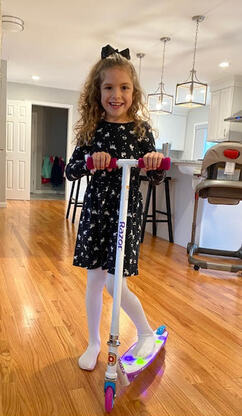 Name: Madison T. Age: 8 How long have you been dancing with SRL? Why SRL? This is my 2nd year. I started in the fall of 2019 as a beginner. We found out about SRL when we went to a performance at the Enfield Public Library, and loved watching the dancers. How did you get started with Irish dance? I went to a trial class at the studio and wanted to come back because it was so much fun. Who do you look up to? My mom. What's your favorite dance-related memory? The first day of my very first class. I loved my teacher! 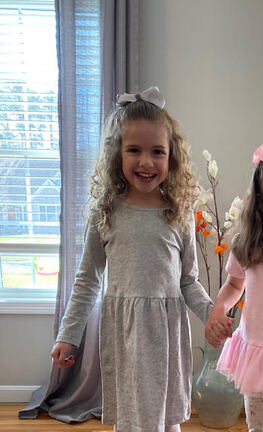 What do you want to be when you grow up? Why? A singer. I love singing and making up songs. What's your favorite thing about dancing? I love learning new steps. If you could live anywhere in the world, where would you live and why? Florida. It's super warm, and I love it there. Plus, I was born in Tampa. If you could only eat one thing for the rest of your life, what would it be? Homemade mac and cheese. That's my favorite meal. What's the best advice you can give a new or younger dancer? Always do your best, and keep practicing whenever you can so you don't forget your steps! This post is part of a series. See our Q&A with another SRL dancer, Sarah H., here. Check out the blog every Monday and Thursday for more posts about Irish history, dance culture, community news, and spotlights on our dancers, staff, and families—among other fun projects! And don’t forget to dance along with us on both Facebook and Instagram. The Irish Love Story Since it’s the day after Valentine’s Day, we decided it was the perfect time to share one of Irish mythology’s most epic love stories! Why the day after? Because Irish mythology, and particularly Irish love stories, aren’t known for their happy endings. In fact, Joseph Campbell, one of the preeminent scholars in comparative mythology of the 20th century, theorized that our concept of love in Western, modern culture was not only influenced, but entirely formed by Irish mythology. Campbell believed that Irish mythology’s insistence of true, romantic love over duty (ending, usually, in tragedy) has formed Western consciousness as we know it. Innumerable Pre-Christian, Irish love stories involve the lovers running away from society into the wilderness with only their “love to keep them warm” (no one sings that sad, romantic classic quite like Billie Holiday.) When the Normans invaded Ireland at the beginning of the Middle Ages, they (like many before and after them—look at Halloween or Christmas traditions, for instance) adapted Irish mythology into their own tales for their own purposes. This adaptation became the archetype of courtly love, forming the Arthurian legends that still influence our storytelling and romantic ideals today. Take, for example, the story of Grainne (typically pronounced “Grawn-ya”) and Diarmuid (aka “Dear-mid”,) from the Fenian cycle—one of the most enduring love stories in all of Irish mythology. (Even if these names are new to you, it will probably sound a bit familiar.) Grainne was the beautiful daughter of the High King of Ireland, who decided his daughter should marry the (aging) mythic hero and warrior Fionn mac Cumhaill (or these days by the pronunciation: “Finn MacCool,”) leader of the warriors known as the Fianna. Like many things parents try to map out for their children, this didn’t go entirely to plan. At her wedding feast, Grainne spotted the young, handsome Diarmuid, best warrior and best friend of her new husband, and it was love at first sight (in all fairness, Finn MacCool was older than her father.) In a desperate move, Grainne drugged the entire party and convinced Diarmuid to run away with her. His pride wounded, Finn MacCool immediately began his pursuit of the young lovers across all of Ireland and back again, with many an adventure in between (innumerable local legends claim that this spot or that is where the couple hid so many years ago.) The pair was eventually allowed to settle in what’s now County Sligo until Diarmuid was gored by a boar…but that wasn’t truly what killed him. Grainne begged MacCool (who had either still been pursuing the couple or had invited Diarmuid on the hunt knowing he was destined to die by boar—versions differ) to use his magical gift (water drunk from his cupped hands could cure any ailment) to save her love. But MacCool’s long-harbored pettiness led him to let the water slip through his fingers and Diarmuid ultimately passed away from his injuries. Legends agree upon one fact: Grainne died soon after of a broken heart. (We know what you’re thinking, this can’t be what all Irish love myths are like. Well, the details change, but the broad strokes are the same across the board.) Now where have you heard this before? This story is pretty similar to the better known (there is, after all, a beloved Wagner opera of the name, as well as a less beloved 2006 film starring James Franco,) Irish tale of Tristan and Isolde, as well as the tale of King Arthur, his wife, Guinevere, and his knight, Lancelot. It’s not much of a jump to move ahead 1,000 or so years (skipping many incarnations in between) and compare it to Othello or even Romeo and Juliet (“never was there a story of more woe,” as the Bard said.) Another 250 years brings us to Wuthering Heights, and only another 100 and we catch up to West Side Story (which is, very consciously, a modern Romeo and Juliet.) Turn on the TV today and you might catch a showing of The Notebook or Me Before You, or maybe an episode of This is Us. Even our what we consider real life, modern fairytales like Princess Diana, Grace Kelly, or different relationships within the Kennedy family all ended tragically. Sure, there are plenty of couples out there in the real world (and in stories!) that live happily ever after…but aren’t those usually the cleaned-up versions we tell to children?
While it’s not a straight shot from ancient Celtic lore to a TV show starring a former teen pop star, there’s an undeniable influence Irish mythology has had on Western society and our ideals of romantic love. It’s hard to say whether this is the healthier, more realistic view of love (mortality, after all, being a fact of life,) or a fatalistic and maybe even self-indulgent focus on the negative–that’s for each person to decide for themselves. You can love or hate to cry over a tragic love story, but I think Joseph Campbell would agree you have the Irish to thank! This is Volume III of a series. Read our last installment all about Samhain (Irish Halloween) here. Check out the blog every Monday and Thursday for more posts about Irish history, dance culture, community news, and spotlights on our dancers, staff, and families—among other fun projects! And don’t forget to dance along with us on both Facebook and Instagram 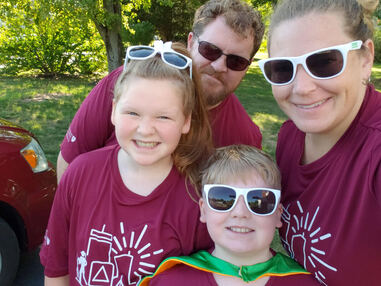 Name: Becca H. Dancer at SRL: Sarah H. How long has your family been with SRL? Just over 2 years Why Irish dance? Sarah kind of fell into it when a friend joined, and she wanted to dance with her friend. Its upbeat cadence and structure definitely appeal to her more than ballet or jazz dance. And as a musical family with 3 violin players, we love hearing the beautiful reels and jigs! Favorite winter family activity? I’m not a big cold weather fan, so I’m happy snuggling under a cozy blanket for a family movie (or escaping on a vacation to somewhere warm!) Who’s your biggest inspiration? It all depends on my interest at the time. Whenever I set a new goal, I seek out role models who I can learn from by breaking down big goals into achievable milestones. When I was training for my first marathon, I was inspired by Olympian runner Jeff Galloway who had a great method for learning to run long distances, and it was a thrill to meet him at the marathon expo the day before my big race! What’s your favorite dance-related memory? I was always intrigued by the Irish Step dancers who would perform for us in elementary school with their beautiful dresses. A close second, purely for the laughs, is when my sister and I were doing a tap dancing routine and she forgot to duck when I was supposed to swing my leg over her head – boink! What food have you never eaten but would really love to try? Since eliminating gluten & dairy from my diet 7 years ago for health reasons, pretty much anything that comes out of a fryer at a fair looks amazing! 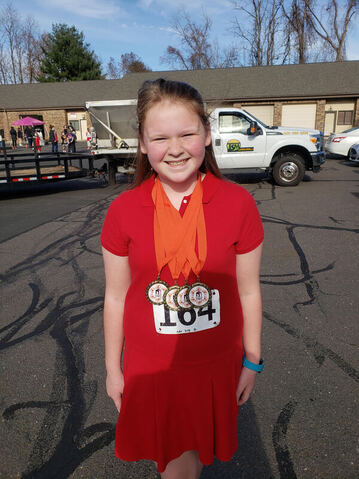 What advice would you give parents who are looking to try out Irish dance? Give it a whirl! Just be aware that anything hanging on your walls will be off kilter from your student constantly jumping and kicking down the hallways. 😉 What did you want to be when you grew up when you were little? Why? Like many kids, I wanted to be a vet since I love animals. Instead, I became an IT professional, but foster kittens to fulfil that desire to work with animals. If you had a theme song, what would it be? “I Won't Back Down” How do you think dance has positively affected your dancer? I’m amazed at the choreography she memorizes. I was so proud that she quickly gained the confidence to participate in a public performance and also do her first feis. I enjoyed watching her teach a dance to some younger Girl Scouts at one of our meetings last year, and I love that she has volunteered to help out at SRL classes with younger children – it’s all been a great growing experience for her in many ways. This post is part of a series. See our Q&A with another SRL family, Ken and Dana J., here. Check out the blog every Monday and Thursday for more posts about Irish history, dance culture, community news, and spotlights on our dancers, staff, and families—among other fun projects! And don’t forget to dance along with us on both Facebook and Instagram. St. Valentine and Irish Romantic Traditions It’s common knowledge these days that, no matter how commercial it may seem, Valentine’s Day is a much older tradition then the invention of Conversation Hearts. (Remember last year’s shortage? They apparently take eleven months to make enough for the six-week period around the holiday!) Like much in the Western world, it’s a custom poached from the remains of the Roman Empire and though ancient history is a little fuzzy about the details (there may be two or three different St. Valentines,) we’ve landed on this (probably not entirely correct) story: a priest named Valentine was executed for marrying Christian couples and became a saint for his good works. Now we celebrate love in his honor on his feast day (the day he was martyred) in the liturgical calendar: February 14th. (Though the church did remove the celebration officially in 1969, making it wholly secular these days.) Now that we’ve got that out of the way, I know what you’re thinking: why are we writing about St. Valentine under Irish history? It’s true, St. Valentine wasn’t Irish by birth, but he’s now been in the country long enough to call himself an Irishman. In 1836, an Irish Carmelite priest named Friar John Spratt visited Rome and his sermons were so brilliant he was showered with gifts from the most influential religious figures in the city—including the Pope. The Pope’s gift went above and beyond a commemorative mug: he gave Friar Spratt relics from the body of St. Valentine to bring back to Ireland for the Irish people. St. Valentine was reinterred in a Carmelite church on Whitefriar Street in Dublin (it’s now Aungier Street, but the church kept the name.) Every February 14th, many Irishmen and women come to pay homage and pray for their romantic futures. (Last year Irish Central even interviewed a couple that met doing just that four years ago and now plans on getting married!) Despite the saint the day is named after being buried in their capital, Valentine’s Day isn’t a particularly Irish holiday. However, that doesn’t mean the Irish aren’t romantics at heart. One only has to look at their literary masters (W.B. Yeats, James Joyce, Oscar Wilde …to name a few) and their love poems to know romance isn’t dead on the Emerald Isle. Need a line or two to add to your partner’s card this year? The Irish have got you covered. Or when we can travel again, check out this list of romantic spots all throughout Ireland…but don’t forget the beautiful Howth’s Head just outside of Dublin (where one of the most romantic scenes in classic literature takes place: Leopold proposes to Molly there in Joyce’s tome Ulysses.) Your beloved isn’t much for poetry? That’s okay—try a claddagh ring! The claddagh has become a popular symbol on jewelry all over the world, but originates in County Galway where in the 18th century fishermen used them as identification. The design’s meaning—a heart for love, hands for friendship, and a crown for loyalty—has morphed into a common romantic gift, complete with its own coded language. On the right hand, the heart worn pointing toward your fingertips means you’re available, and towards your own heart means you’re taken. The left hand is reserved for more serious relationships: pointing away is engaged, pointing toward you is married. And ladies, if you feel like doing the proposing, Ireland has a tradition for that too! Every four years on a Leap Day (February 29th,) it’s tradition for women to take the initiative and propose to their male partners. This practice possibly originates as early the 5th century A.D.—which must be why it’s so (sweet but…) antiquated. Speaking of marriage, there’s an Irish romantic tradition even older than Leap Day proposals: handfasting. The tradition dates back to 7000 B.C. and is simple: couples would announce their intention to be married and tie their hands together with a braided length of rope or ribbon in front of a priest. After a year, they would return to the priest to be married or to decide to go their separate ways. Weddings these days often make symbolic use of the tradition (instead of as an engagement ceremony) to show their new unity. But how do you find someone to get handfasted with? Why not check out the 150-year-old Lisdoonvarna Matchmaking Festival! Originally designed to help young people from rural farms meet mates, this sleepy town in Country Clare is transformed every September into the place to meet your match even today.
Last, but not least, one can’t argue that the Irish Gaelic language doesn’t have its touch of romance. Need a new pet name for someone you love? Ireland has a wealth of them and here’s a few to leave you with: A stór (uh STORE): my treasure A ghrá (uh GRAWH): my love A mhuirnín (uh WUR-neen): my darling A chuisle (uh KHUSH-leh): my pulse Mo shíorghrá (muh HEER-ggrawh): my eternal love/soul mate Is ceol mo chroí thú (Is cyoal mu khree who): you’re the music of my heart Happy Valentine’s Day! This post is part of a series. Read more about Ireland's history by reading about the story of Dr. James Barry here. Check out the blog every Monday and Thursday for more posts about Irish history, dance culture, community news, and spotlights on our dancers, staff, and families—among other fun projects! And don’t forget to dance along with us on both Facebook and Instagram.  Name: Sarah H. Age: 12 How long have you been dancing with SRL? Just over 2 years. How did you get started with Irish dance? My friend was doing Irish step and I wanted to try it too. 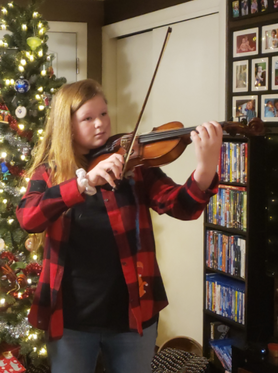 What do you want to be when you grow up? Why? A baker because I like to bake cakes and cupcakes a lot. Who do you look up to? Duff Goldman because he is an amazing baker. What’s your favorite dance-related memory? I had a mini show with a friend for her parents where we choreographed our own dance in her basement. If you were a cartoon character, which one would you be and why? Tinkerbell because she can fly and tinker. 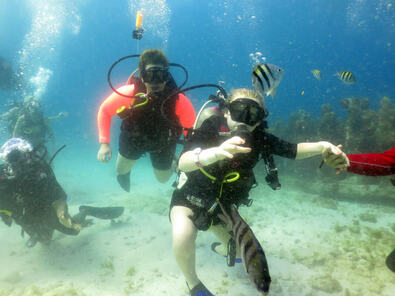 If you could have a superpower, what would it be? Why? To fly because it sounds fun. What’s your favorite thing about dancing? I like that Irish dance actually has a beat to listen to unlike some other dance types. If you could only eat one thing for the rest of your life, what would it be? Italian meatballs and garlic bread. What’s the best advice you can give a new or younger dancer? To work on technique a little before you just speed it up. Because it might be more fun, but technique is very important and can be hard to correct once you make a bad habit. This post is part of a series. See our Q&A with another SRL dancer, Magnus, here. Check out the blog every Monday and Thursday for more posts about Irish history, dance culture, community news, and spotlights on our dancers, staff, and families—among other fun projects! And don’t forget to dance along with us on both Facebook and Instagram. 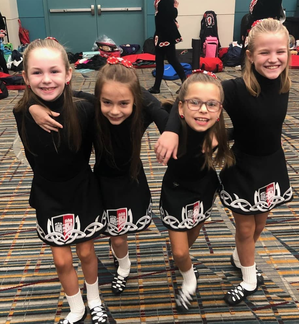 SRL dancers in their school skirts at the 2019 New England Oireachtas SRL dancers in their school skirts at the 2019 New England Oireachtas Levels and Competitions, Part 3 Many of our parents and dancers here at SRL are fully aware of all the ins and outs of Irish dance, and this post isn’t really for them (unless they’ve always been a little fuzzy on some of it—we won’t tell! It’s complicated!) This post is for our up and coming dancers who are excited about competing more regularly. If you’re a Beginner, still learning the ropes, or checking out our website for the first time, check out the six previous posts in the series to catch you up to the present in Irish dance’s history! Regional Oireachtas to Worlds Irish dance’s prevalence these days isn’t simply a case of respect for the intricate footwork, perfect balance, and incredible stamina and grace it takes to make an Irish dancer, it’s a type of cultural exchange that expands the diaspora of the Irish people. Whether you’re of Irish heritage or not, participating in or watching Irish dance brings you a little closer to a country with a complex and rich history. It’s no surprise that the CLRG (the main governing body of Irish dance, based in Ireland) now have records to indicate “that Irish dancing is practiced in countries as far afield as Japan, Brazil, Argentina, South Africa and at an ever-growing rate in Eastern Europe.” Not to mention North America! In our previous two installments, we discussed the foundation of competitive Irish dance: the role of feiseanna (pronounced fesh-anna, the plural of feis i.e. fesh) and the different types of dances performed at these festival competitions (with corresponding music and at varying levels as your technique and skill develop.) But feiseanna are only the local level of the competitive Irish dance circuit. The next step? Time to move up to an Oireachtas competition! (At your teachers’ and parents’ discretion, of course!) The term “Oireachtas” (pronounced o-rock-tus, but say it quickly!) denotes a regional competition (as opposed to a local feis) that can be as broad as a whole section of the country, though the way your day goes will look much like a feis. Fun fact: as the word oireachtas roughly translates to “gathering” or “assembly,” it’s also used as the title of the parliament of the Republic of Ireland, but anyone in the Irish dance world will know what you mean! Oireachtaisi (the plural!) all over the world may have once been more or less very large feiseanna, but these days the annual competitions are held as qualifiers for the World Championship competitions. 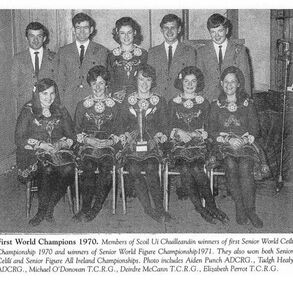 The first World Champs in 1970! The first World Champs in 1970! In North America, there are seven regional oireachtaisi competitions each year (held in and around November) put on by the regional branches of the Irish Dance Teachers’ Association of North America (IDTANA.) Each regional (ours is New England!) oireachtas holds a main championship, which SRL dancers are able to start competing in once they reach the Preliminary Championship level. Somewhere in between Oireachtas and Worlds are national competitions (North America’s is usually in July) that are generally secondary qualifiers for Worlds and open only to the highest level of SRL competitor: Open Championship dancers (see more about the levels in last week’s post!) Depending on the size, these competitions can last several days. Each region also holds team competitions, where dancers compete together in groups of 4, 8, or 16 in traditional céilí dances. SRL dancers are invited to the team program when they reach Beginner II and have shown dedication to their dancing through consistent attendance and regular home practice. The céilí dances are standardized by CLRG and are a great exercise in dancing in unison while keeping impeccable technique, all by depicting beautiful movement patterns with those on their team! Regional Oireachtaisi may also hold a subsidiary competition for up and coming dancers to gain experience on the bigger stage. In New England, we hold a traditional set competition where dancers prepare one of the seven standardized traditional set dances to perform for three adjudicators. Once they complete this hard shoe choreography (that’s been passed down generation to generation!), the dancers receive a rank or placement based on rhythm, timing, technique, and posture. At SRL, dancers in the Beginner II Hard Shoe classes are invited once they’ve mastered the set dance “St. Patrick’s Day.” 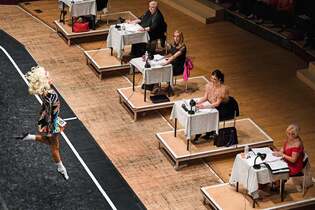 A competitor and adjudicators at 2018’s Worlds—slight changes in 48 years! A competitor and adjudicators at 2018’s Worlds—slight changes in 48 years! 2020 held a number of unique challenges and disappointments, and none more devastating in the realm of Irish dance as the cancellation of the Oireachtas Rince na Cruinne’s (or the World Irish Dancing Championships’) 50th anniversary this past year. While there’s technically no less than six other organizations that call their competition “Worlds,” the Oireachtas Rince na Cruinne overseen by the CLRG is the oldest running (fingers crossed for 2021!) and often referred to as the “Olympics of Irish Dance.” It’s considered by many to be the most prestigious competition available for Irish dancers, and in its early days (1975) was won by no other than Michael Flatley (yes, the “Lord of the Dance,” aka the first name the average person knows in connection with Irish dance and the first American to win!) The first Worlds took place in 1970 (see the pic above!) in Dublin’s tiny Coláiste Mhuire theater in Parnell Square and to this day is usually held over Easter week. The competition remained in Ireland (though the towns and cities rotated) until 2009, when America hosted the competition in Philadelphia. (Though it has now been held in the other countries where the highest concentration of Irish dancers live: Northern Ireland, Scotland, Great Britain, and Canada.) And while Worlds may have started small, 2019’s event (hosted in Greensboro, NC) boasted approximately 5,000 competitors and about 20,000 supporters. When you think of the fact that upon its founding in 1932, the CLRG counted only 32 teachers and 27 adjudicators (aka judges,) it’s easy to see that Irish dance really has become a worldwide phenomenon! While this “olympic” event can be, in many ways, the pinnacle of an Irish dancer’s career (just qualifying is a huge achievement!) there’s many avenues for dancers to keep their love of Irish dance alive after they retire from the competitive circuit. Beyond the numerous professional companies that tour around the world, helping Irish dance, music, and culture reach innumerable people, many Irish dancers become Irish dancer teachers (just look at our staff!) or open their own studios (like Miss Courtney!) There’s also degrees (both BA and MA) in Irish Dance Studies (once again—Miss Courtney’s a great example,) though many dancers pivot into dance-adjacent professions: nutrition, physical therapy, arts administration or fundraising (to name only a few)…it doesn’t have to become a hobby in a dancer’s adult life! This post is part of a series. Read Part 1 of Levels and Competitions here and Part 2 here. Check out the blog every Monday and Thursday for more posts about Irish history, dance culture, community news, and spotlights on our dancers, staff, and families—among other fun projects! And don’t forget to dance along with us on both Facebook and Instagram. |
SRL NewsFind all of our latest news on our Scoil Rince Luimni Facebook page! Categories
All
Archives
August 2022
|
 RSS Feed
RSS Feed